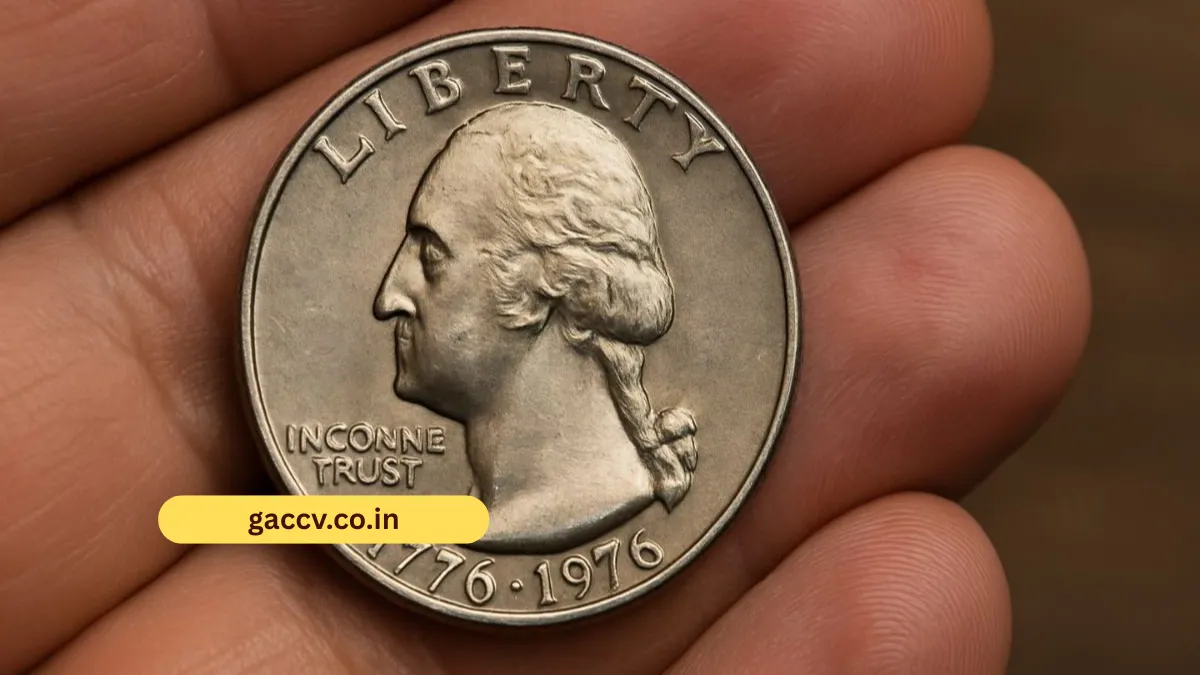In the realm of coin collecting, tales of rare coins fetching astronomical sums often capture public imagination
Coin collecting often sparks interest because of stories about rare coins being sold for huge amounts of money. One such tale is about a Bicentennial Quarter that is said to be worth $2.5 billion.
This story has made rounds on the internet and caught the attention of many collectors and enthusiasts. But it’s important to look at the facts and understand what the Bicentennial Quarter is really worth.
The Bicentennial Quarter: A Commemorative Coin
The United States Mint released the Bicentennial Quarter in 1975 and 1976 to mark 200 years since America gained independence. These quarters are different from regular ones because they have a special design on the back:
- Front (Obverse): Still shows the familiar portrait of George Washington.
- Back (Reverse): Features a colonial drummer and a victory torch surrounded by 13 stars, representing the first thirteen colonies.
- Dual Date: Shows “1776–1976” instead of a single year.
More than 1.6 billion of these coins were made at the mints in Philadelphia, Denver, and San Francisco, so they are not considered rare.
Debunking the $2.5 Billion Valuation Myth
The idea that a Bicentennial Quarter could be worth $2.5 billion is false and not supported by any solid evidence. This rumor likely started from online hoaxes and clickbait stories meant to generate attention rather than inform.
To compare, the most expensive coin ever sold is the 1794 Flowing Hair Silver Dollar, which sold for about $10 million—not even close to $2.5 billion. No Bicentennial Quarter has ever sold for such an extreme amount.
Factors That Can Increase a Bicentennial Quarter’s Value
Although the billion-dollar claim is just a myth, some Bicentennial Quarters can be worth more than 25 cents because of certain features:
1. Minting Errors
Coins with mistakes made during production can be highly valuable. Some common types include:
- Double Die Errors: Parts of the design appear more than once.
- Off-Center Strikes: The image on the coin is not properly aligned.
- Misstrikes: Odd flaws during minting.
These errors can increase a coin’s value significantly, sometimes bringing in hundreds or even thousands of dollars if rare and in good shape.
2. Silver Composition
Most Bicentennial Quarters are made of copper and nickel, but the San Francisco Mint made special collector’s versions with 40% silver. These were sold in proof and uncirculated sets.
- Weight: Silver quarters weigh about 5.75 grams, while regular ones weigh 5.67 grams.
- Edge: Silver coins have a solid silver edge, unlike regular coins which show a copper stripe.
Depending on their condition, silver Bicentennial Quarters can sell for $10 to $50 or more.
3. Proof Coins
Proof coins are created for collectors and have extra sharp details and a glossy finish. Silver proof Bicentennial Quarters in top condition can sell for higher prices due to their quality and appeal.
Identifying Valuable Bicentennial Quarters
If you think you have a valuable Bicentennial Quarter, here are some things to check:
| Feature | Description |
|---|---|
| Mint Mark | Look for an “S” which shows it was made in San Francisco. |
| Weight | Silver coins weigh 5.75 grams; regular ones weigh 5.67 grams. |
| Edge | Silver coins have a solid edge; others show a copper stripe. |
| Errors | Look for doubling, misalignment, or other minting flaws. |
| Condition | Coins graded MS-67 or higher are more valuable. |
The story about a Bicentennial Quarter being worth $2.5 billion is entertaining but not true.
Most of these quarters are still only worth 25 cents, but some may be worth more if they have special features like minting errors, silver content, or proof quality.
If you have one, take a closer look—it could be worth more than you think, but don’t expect to become a billionaire overnight.
FAQs
Are Bicentennial Quarters made of silver?
Yes, some are. The San Francisco Mint made 40% silver versions for collectors. These coins have an “S” mint mark and a solid silver edge.
Can a Bicentennial Quarter be worth thousands of dollars?
It’s possible, but only if the coin has rare minting errors or is in outstanding condition.
How can I determine if my Bicentennial Quarter is valuable?
Check the coin for mint marks, weight, edge color, and any visible errors. For the most accurate evaluation, consider having it checked by a professional coin appraiser.




